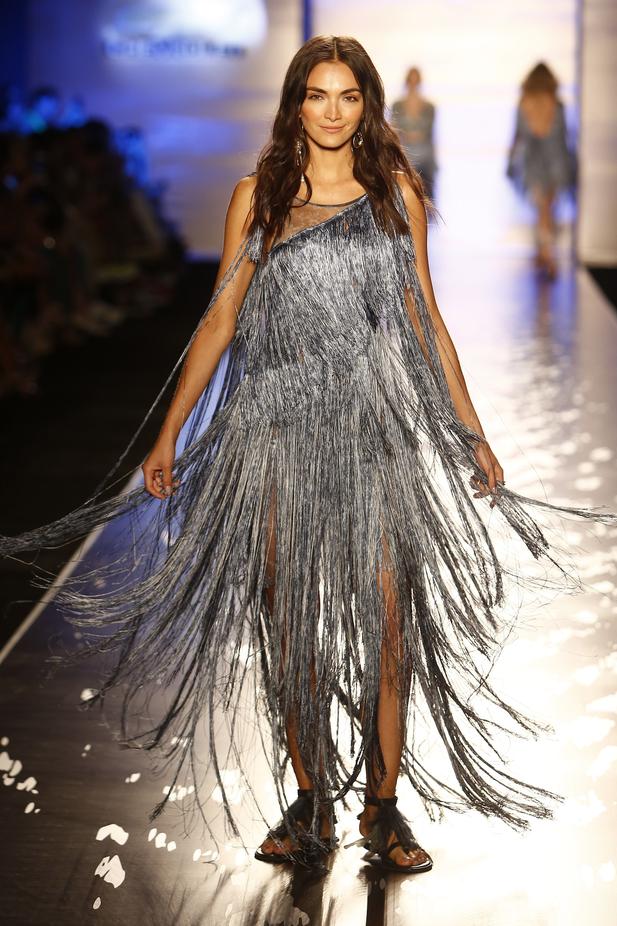
At the start of 2022 sustainable and sustainable fabrics are the focus of the country's textile industry. In Colombiatex de las Américas 2022 this commitment is becoming more than clear, an example of this are companies like Encajes S.A. and Mag Textiles.
Lace, a Bogotá company with more than 40 years of history, specialist in this ornamental fabric, launched its new applications and developments with sustainable fibers and eco-friendly fabrics.
It was the first company in Colombia to obtain the Global Recycle Standard (GRS) certification, which indicates that they are responsible for managing sustainable processes, generating, among other things, considerable water savings in their plants.
Focused on the lace sector, they serve the world's major underwear brands, such as Victoria's Secret and Calvin Klein, companies that in turn have been driving the company's growth and innovation.
In this sense, Go Green is the Lace brand that refers to eco-sustainable products.
“The yarn we use in this collection represents a reduction of nearly 50% in the environmental footprint left by the production of each kilo of yarn. The recycling of the preconsumo thread allows the elimination of about 70% of the processes of extraction of natural resources and production processes”, assured Lina Ordóñez, manager of Encajes Communications.
The company exports its product to 40 countries. This influence allows the company to present new collections every six months with more than 200 designs each, reaching the most important showcases in New York, Paris, London and Madrid.

This Colombian company is the exclusive distributor for the Andean region of Lycra fibers, high-tech textiles. With them, intimate, active garments and jeanswear are made.
“The Colombian fashion industry is present in the most important markets in the world and Lycra fibers are always next to them. We support the creation of new sustainable products, strengthening quality and design at the same time”, stated Camilo Montoya, General Manager of Mag Textiles.
Its portfolio includes fibers made 100% from textile waste such as Coolmax and Thermolite.
The sophistication of the glass, the fact that it can really only be made badly if the bar doesn't know how to make… https://t.co/BW4zXFu6XB
— Zeneca Czarina ✨ Wed Apr 28 07:44:37 +0000 2021
Another example of sustainability is the company Perutex, which has a winery in Medellín. Apart from the fact that their fabrics made in Peru with cotton threads of the highest quality, they developed a natural pigmentation.
It is a new technology of natural pigments, derived from plants, herbs, residues and agro-industrial waste (Alfalfa, cochineal, turmeric, Achiote seeds) that the company incorporates in the manufacture of its fabrics.
Some of them used in the cosmetics industry have become a sustainable alternative to traditional chemicals.
Biodye, as the technology is called, also incorporates softeners based on rice hulls.
Natural fibers whose production processes are associated with sustainability are strongly positioned in the market, as is the case of Litofibra, a leading hemp distribution company in Latin America .
The benefits of hemp are represented in two ways; The first is associated with its environmental impact, since comparatively, in the same area where one ton of cotton is produced, three or four tons of hemp are planted. Additionally, this process considerably reduces water use.
Hemp fabric is more durable than other fibers, is naturally hypoallergenic, does not absorb odors, and is thermoregulatory. Regarding its market, hemp is quite versatile since it covers different universes of the wardrobe such as outerwear, underwear and footwear.
Like the companies already mentioned, many others are beginning to enter the world of sustainable fashion in which there are great challenges to keep up with Europe, however, Colombian clothing manufacturers have been doing a judicious job to adapt to this trend .
50% of the lace is produced with recycled threads.
This article is from our print newspaper.
Let's make a region and support ours!
https://digital.elnuevodia.com.co/library
You can also purchase it physically.